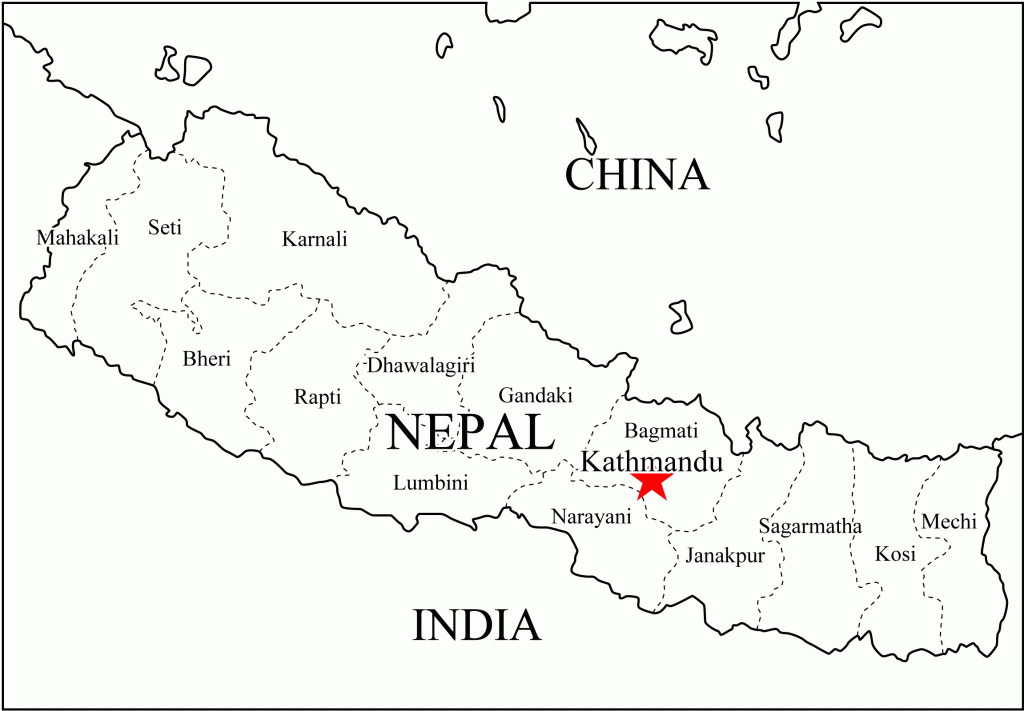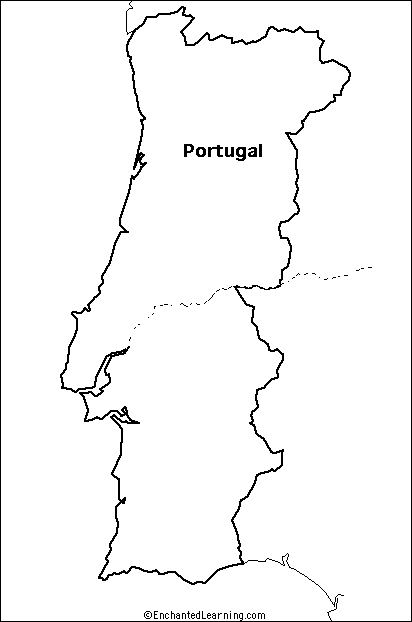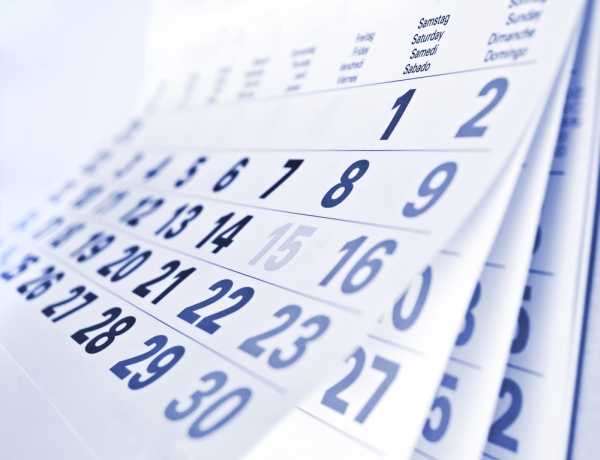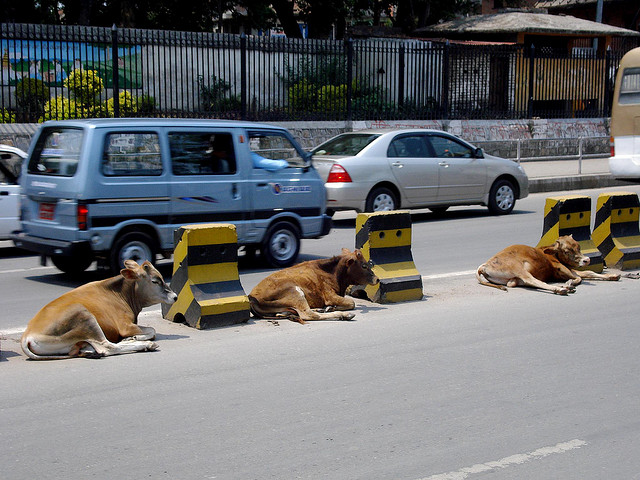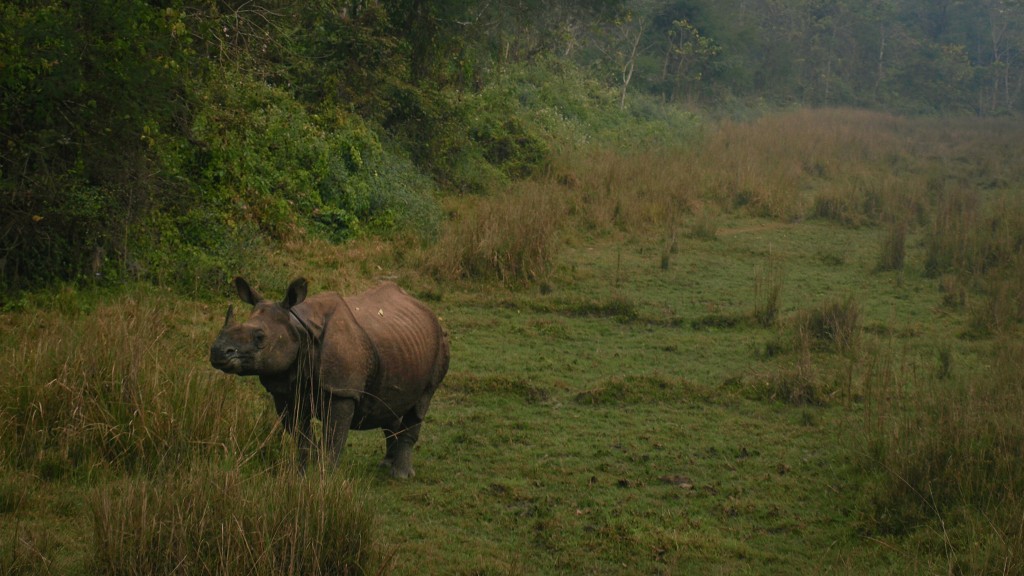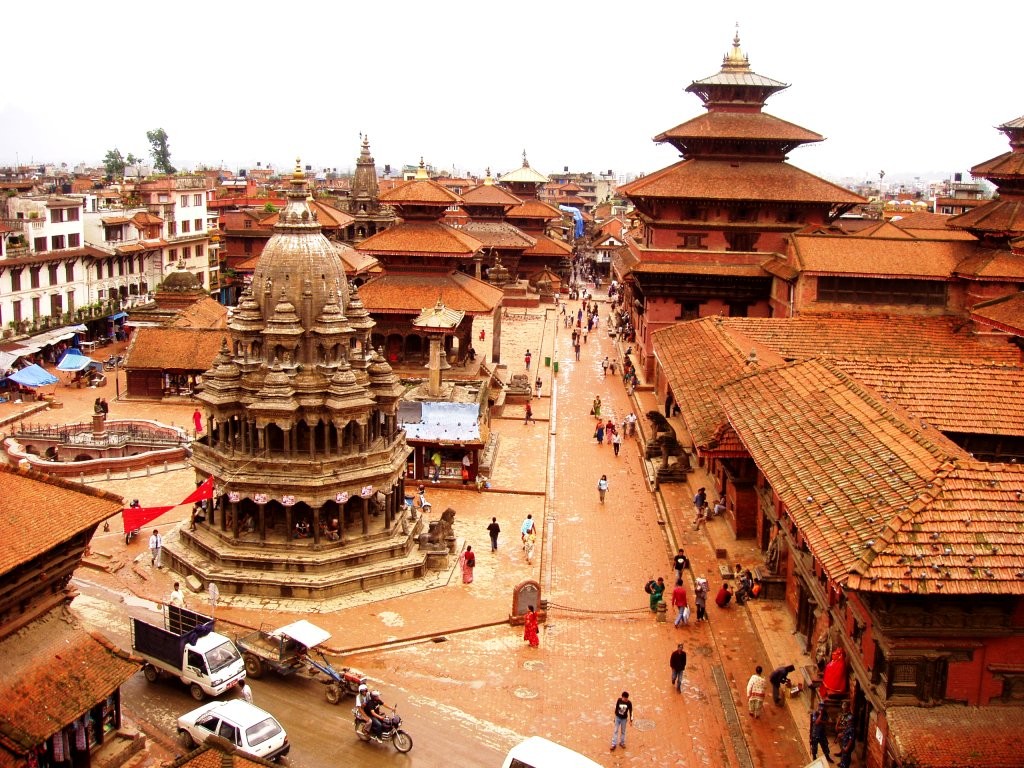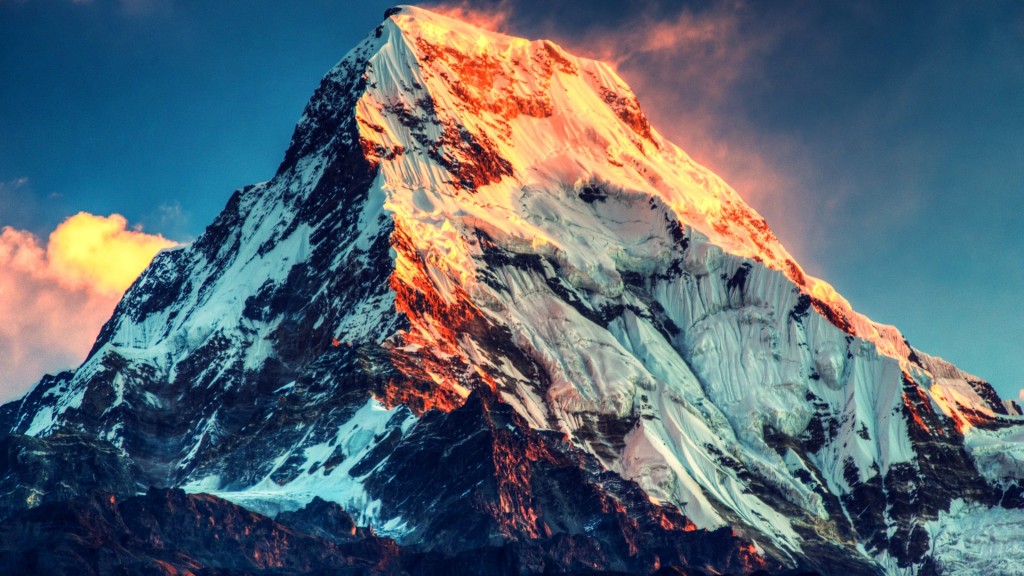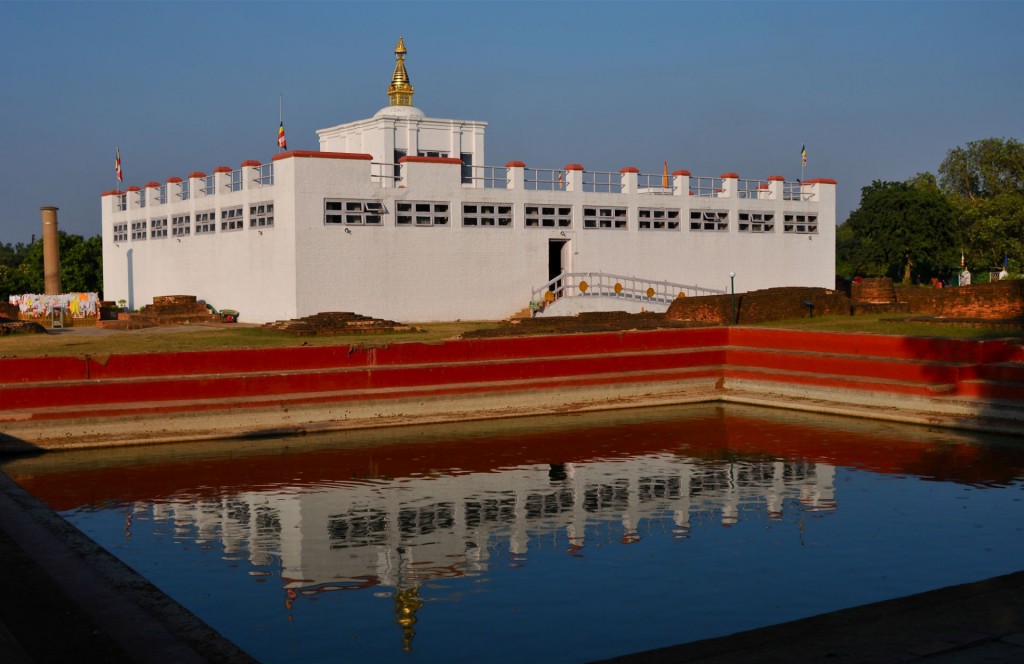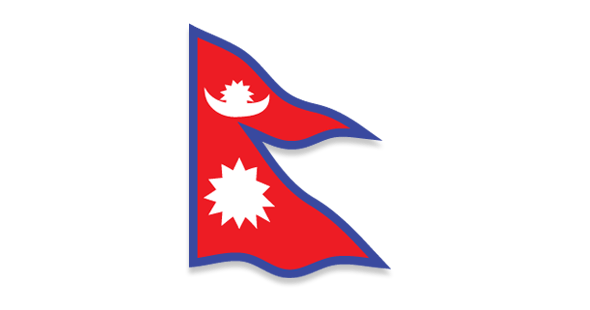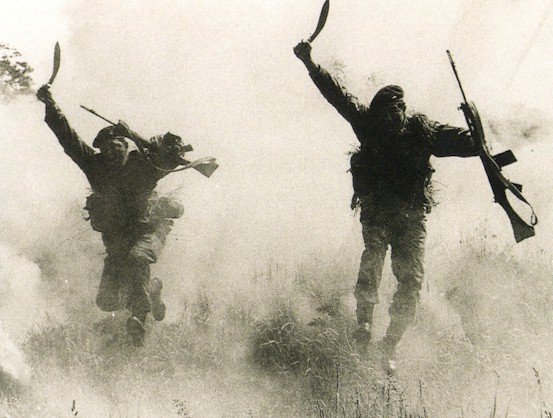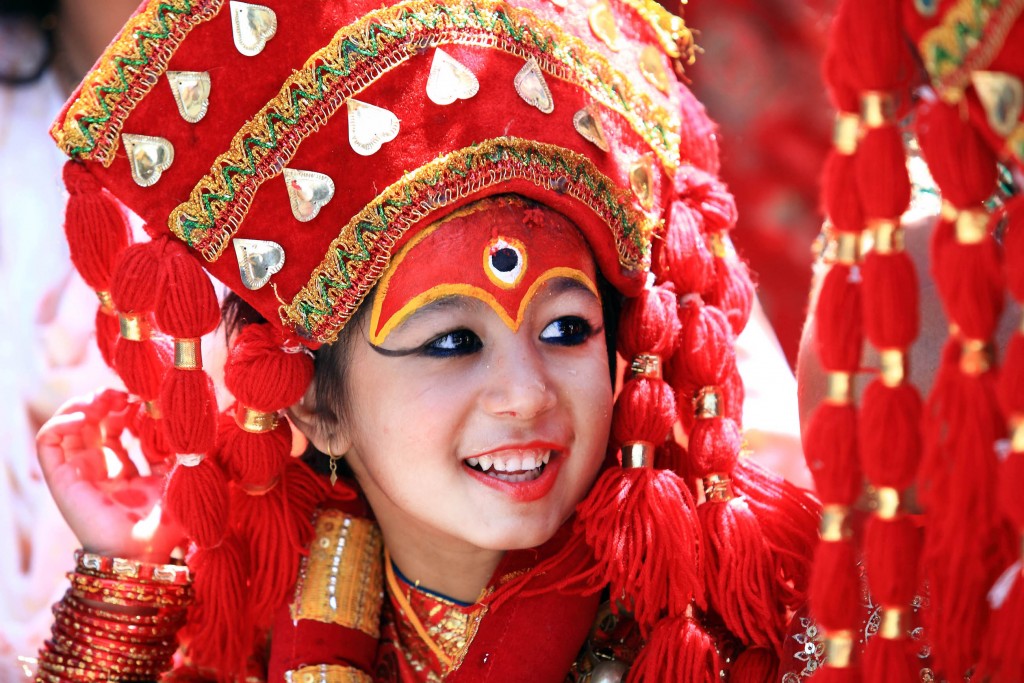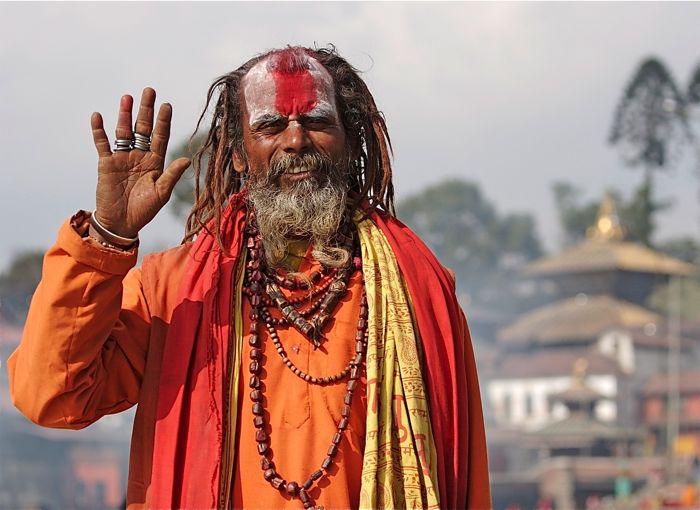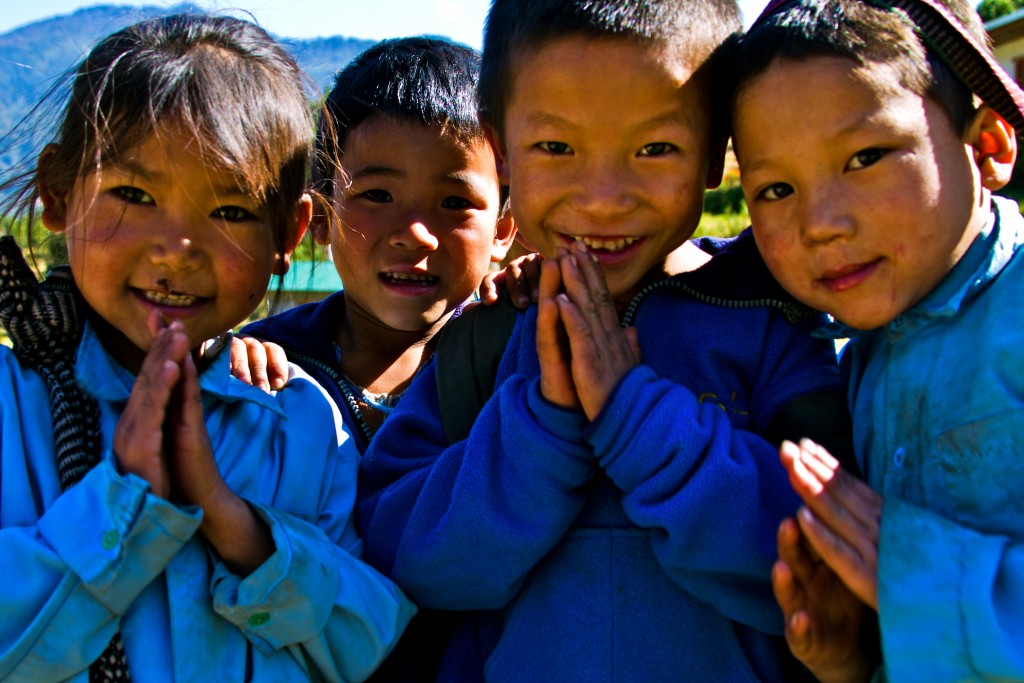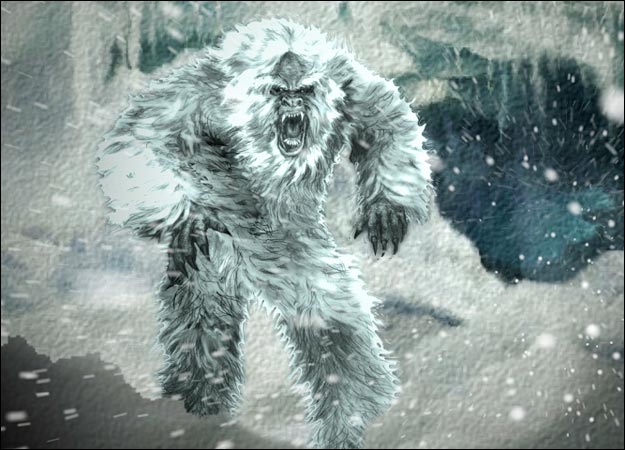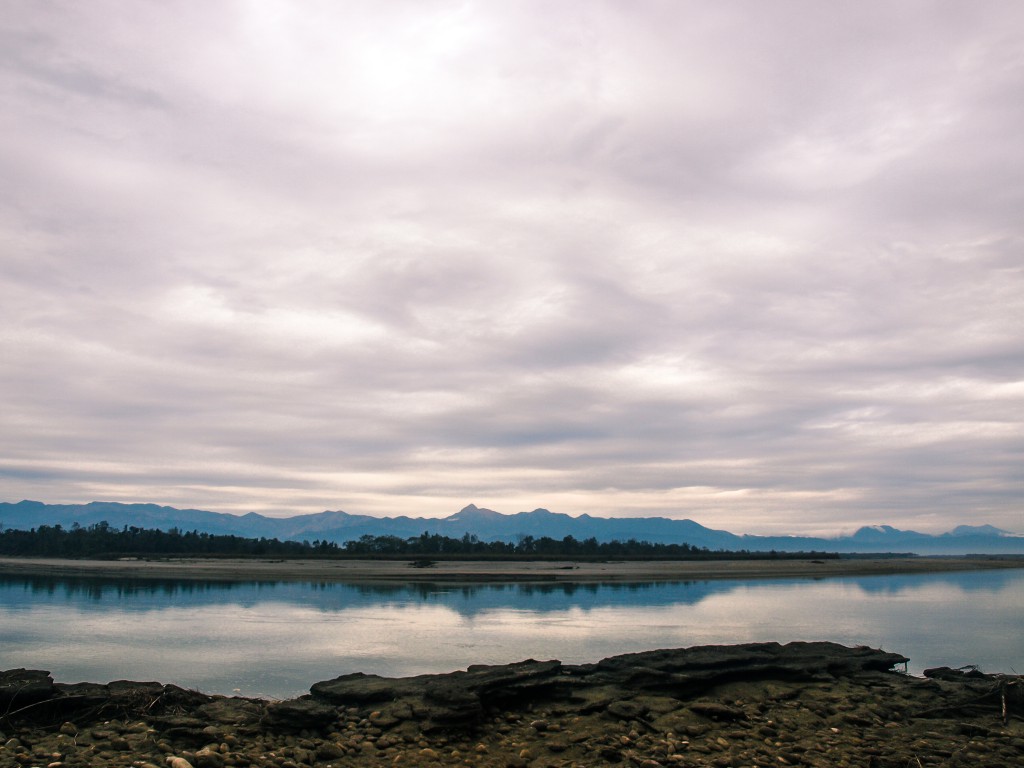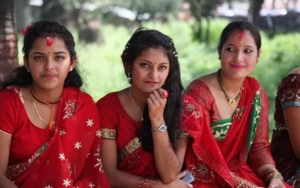Текст Beautiful Nepal! с переводом.
Beautiful Nepal!
Красивый Непал!
| Sun 5th April – Kathmandu | Воскресенье 5-е апреля – Катманду | |
| We arrived safely in a very foggy Kathmandu after our short but delayed flight from India. We caught a local bus to the hotel, passing street vendors, beggars, shoeshine boys and even a barber with his chair and cracked mirror out on the pavement! This morning we escaped the dust, noise and pollution of the city to visit the incredible Monkey Temple up in the hills. There really were hundreds of monkeys there —- they were running around everywhere. There were lots of steps to climb but it was worth it — the view of the snowy peaks of the Himalayas in the distance was absolutely breathtaking! | Мы благополучно добрались из Индии до очень туманного Катманду после короткой задержки рейса. Мы сели в местный автобус, чтобы доехать до гостиницы, проезжая уличных продавцов, попрошаек, чистильщиков обуви и даже парикмахер с креслом и треснутым зеркалом на тротуаре! Этим утром мы сбежали от пыли, шума и загрязнения города в невероятный Обезьяний Храм на холмах. Действительно, там были сотни обезьян – они бегали повсюду. Надо было подняться по большому количеству ступенек, но оно того стоило – вид снежных вершин Гималаев в дали захватывал дух! | |
| Tues 7th April – The Himalayas | Вторник 7 апреля – Гималаи | |
| We woke up yesterday morning feeling so excited! Finally the day we would begin our 2-day trekking excursion to the Himalayas had arrived! We took a small plane journey from Kathmandu and then trekked for hours up and down the rocky mountain trail. It was hot in the bright mountain sun but quite cold wherever there was some shade. You can’t imagine how spectacular the scenery was! We finally reached a village called Phakding where we put up our tent and camped outside a teahouse. We tried some local dishes, which were delicious, and then got into our sleeping bags. It got cold very quickly once the sun had gone down! I awoke the next morning to the most amazing sunrise I had ever seen! I took a walk down to the river where I ran into two young boys playing. They were really friendly. Nepalese villages are very poor, but everyone we met in the mountains seemed happy. | Вчера утром мы проснулись, чувствуя себя в приподнятом настроении! Наконец, день, когда мы начнем нашу 2-х дневную пешую экскурсию в Гималаи, наступил! Мы совершили небольшую поездку на самолете из Катманду и потом пешком ходили то вверх, то вниз по скалистой горной тропе. Под ярким горным солнцем было жарко, но в тени было весьма прохладно. Вы можете представить, насколько восхитительным был пейзаж! Наконец, мы достигли деревни под названием Факдинг, где мы установили нашу палатку и жили там снаружи чайханы. Мы попробовали некоторые местные блюда, которые были вкусны, и потом залезли в спальные мешки. Как только зашло солнце, то стало очень холодно! На следующее утро я проснулся, чтобы встретить самый удивительный восход, который я кода-либо видел! Я прошелся вниз к реке, где столкнулся с двумя играющими мальчиками. Они были по-истине дружелюбны. Непальские деревни очень бедны, но каждый, которого мы встречали в горах, казался очень счастливым. | |
| Thurs 9th April – Bhaktapur | Четверг 9 апреля – Бхактапур | |
| Returning from the mountains, Kathmandu seemed even busier than when we left! We took a taxi to the ancient town of Bhaktapur today as we had heard that its annual festival Bisket Jatra was taking place. When we got there, we hired a guide, who took us to see the noisy tug-of-war contest that kicks off the festival every year. Apparently, the festival is based on a fairy tale and continues for days. It includes a wild parade, a candlelit procession and two more tugs-of-war! Later in the day, we went on a guided tour of Bhaktapur’s magnificent temples, then we went shopping for souvenirs. The city is full of craftsmen selling paintings and handicrafts. I bought some beautiful pottery and Jake found a fantastic pair of hand-made drums! | Возвращаясь с гор, Катманду казался даже более оживленным, чем тогда, когда мы уезжали! Мы сели в такси, чтобы добраться к древнему городу Бхактапур, поскольку мы слышали, что там проходит ежегодный фестиваль Бискет Джатра (Bisket Jatra). Когда мы прибыли туда, то наняли гида, который отвел нас посмотреть на соревнования по перетягиванию каната, которые каждый год открывают фестиваль. По всей видимости, этот фестиваль основан на какой-то сказке и продолжается в течение нескольких дней. Он включает дикий парад – процессия с зажженными свечами, и еще два перетягивания каната! Немного позже в тот день мы отправились с гидом на экскурсию в великолепные храмы Бхактапура, и потом мы пошли покупать сувениры. Город полон умельцев, продающих картины и изделия ручной работы. Я купил несколько красивых изделий из глины, а Джейк обнаружил фантастическую пару барабанов ручной работы! | |
| Sat 11th April – Home Sweet Home! | Суббота 11 апреля – В гостях хорошо, но дома лучше! | |
| Jake and I finally put on our backpacks for the last time and flew home today after 5 weeks, 4 countries, 2 nasty viruses and countless temples, mountains, beaches and cheap campsites and hotels! I’ll never forget the amazing experiences I’ve had backpacking through Asia, but right now I’m looking forward to some home comforts and a good night’s sleep… | Мы с Джейком, наконец, сегодня в последний раз надели наши рюкзаки и отправились домой после 5 недель, 4 стран, 2 ужасных вирусов и бесчисленных храмов, гор, пляжей и дешевых стоянок и гостиниц! Я никогда не забуду удивительные переживания, которые я получил, совершая туристическую поездку по Азии, но прямо сейчас я с нетерпением жду домашнего комфорта и хорошего ночного сна… |
Источник: Spotlight, 10 класс
Essay on Tourism in Nepal.
Our country Nepal is rich in natural beauties gifts, resources and wonders. There are many places and things of cultural, historical and religious importance. Mt. Everest, the highest peak in the world, lies in Nepal. We are proud of it. The snowcapped mountain peaks, beautiful water resources, the green forests of hypnotic beauty, flora and fauna, etc. tempt many tourists every year.
Nepal is known as a suitable place to promote tourism. The nature has given us many things which are liked by tourists. Some tourists come here to enjoy the natural beauties and wonders. Some of them visit our country for trekking and climbing mountains. Some want to learn something about our history, culture, religion and so on. We can see that some tourists come here to enjoy their holidays.
Tourism plays a significant role in Nepal. We can get many advantages from it. Firstly, we can earn foreign currency which can be use for our development. Many people have got employed in the offices belonging to tourism. Thus, it helps to lessen the problems of unemployment. Tourists buy our goods, curios and native articles of our country. By the result, our cottage industries can get benefited. Tourism helps our hotel industry. They want to live in good hotels. Many expensive and good hotels have been providing services to them. Similarly, many tourist guides and porters are employed in it.
We can learn their languages, cultures and traditions from the tourists. They also learn many things from us. The fame and glory of our nation get widened because they can be their achievements to their friends and relatives. Our country Nepal will be known to the rest part of the world. When they observe our good cultures, traditions and things, they expose them to their country.
There are a few disadvantages of tourism. Some of the communicable diseases can be spread by tourists; it is the worst effect of it. Because of tourism, some of the beauty spots are getting polluted. We can see many bottles, plastic bags and others even at the highest peak, Mt. Everest. Some of the tourists can be criminal. They can commit crimes here.
There are some problems in the field of tourism in Nepal. The major problems are transportation and security. Most of the beauty spots are situated in remote areas. We have not built roads to go to all these places yet. We have to depend on only air services. Similarly, the problem of security has reduced the number of the tourists. There are not standard hotels in the remote areas. We have to provide all eh facilities to the tourists to promote tourism in Nepal.
We have to try to promote tourism in Nepal. All the sectors concerned are expected to give high priority to promote it. The government should provide transportation facilities and security to the tourists. Then, more and more tourists will be tempted to visit our motherland.


- Entertainment & Pop Culture
- Geography & Travel
- Health & Medicine
- Lifestyles & Social Issues
- Literature
- Philosophy & Religion
- Politics, Law & Government
- Science
- Sports & Recreation
- Technology
- Visual Arts
- World History
- On This Day in History
- Quizzes
- Podcasts
- Dictionary
- Biographies
- Summaries
- Top Questions
- Week In Review
- Infographics
- Demystified
- Lists
- #WTFact
- Companions
- Image Galleries
- Spotlight
- The Forum
- One Good Fact
- Entertainment & Pop Culture
- Geography & Travel
- Health & Medicine
- Lifestyles & Social Issues
- Literature
- Philosophy & Religion
- Politics, Law & Government
- Science
- Sports & Recreation
- Technology
- Visual Arts
- World History
- Britannica Explains
In these videos, Britannica explains a variety of topics and answers frequently asked questions. - Britannica Classics
Check out these retro videos from Encyclopedia Britannica’s archives. - #WTFact Videos
In #WTFact Britannica shares some of the most bizarre facts we can find. - This Time in History
In these videos, find out what happened this month (or any month!) in history. - Demystified Videos
In Demystified, Britannica has all the answers to your burning questions.
- Student Portal
Britannica is the ultimate student resource for key school subjects like history, government, literature, and more. - COVID-19 Portal
While this global health crisis continues to evolve, it can be useful to look to past pandemics to better understand how to respond today. - 100 Women
Britannica celebrates the centennial of the Nineteenth Amendment, highlighting suffragists and history-making politicians. - Britannica Beyond
We’ve created a new place where questions are at the center of learning. Go ahead. Ask. We won’t mind. - Saving Earth
Britannica Presents Earth’s To-Do List for the 21st Century. Learn about the major environmental problems facing our planet and what can be done about them! - SpaceNext50
Britannica presents SpaceNext50, From the race to the Moon to space stewardship, we explore a wide range of subjects that feed our curiosity about space!
The enigmatic country of Nepal boasts its diverse ethnicity, rich culture and awe-inspiring natural beauty. Nepal is truly a god’s playground with stunning majestic mountains, dramatic landscapes and mesmerizing lakes.
With a wide variety of flora and fauna, Nepal holds some of the rarest species wildlife such as the one-horned Rhino, Bengal tiger, Red Panda and the national flower Rhododendron.
We are listing some of the most interesting fun facts about Nepal. The most baffling fact about Nepal is that all of the following remarkable things happens within the area of 147,181 sq. km (56,827 sq. mi).
1. Map of Nepal and Portugal is similar
Nepal and Portugal are alike in the world Map. They both have similar rectangular territory.. If the map of Nepal is turned 90 degrees clockwise, it looks very similar to the map of Portugal.
Planning trip to Nepal and need help?
2. Unique Nepali Calendar
The Nepali calendar called Bikram Sambhat is approximately 67 years and 8.5 months ahead of Gregorian calendar.
The Nepali New Year is celebrated in mid-April.
3. Slaughter cows is illegal
As a national animal of the country, slaughtering of cows is illegal in Nepal. Although, you can enjoy beef at different restaurants and eateries.
It is not uncommon to see cows wandering around the streets of Kathmandu.
4. Nepal – Amazon of Asia
In terms of biodiversity, Nepal is one of the richest countries in the world. It is rightfully called Amazon of Asia as it is a home for the variety of unique species of Flora and Fauna.
Nepal has more than 900 species of birds, which accounts to 8.9% of the total species of birds all around the world. It has 4.2 % of the world’s butterfly species and 3.96 percent of the world’s mammal species.
5. Kathmandu – Living Cultural Museum
Nepal is culturally rich country. There are dozens of World Heritage Sites categorized as Natural and Cultural World Heritage Sites.
Kathmandu valley alone has seven UNESCO’s World Heritage Cultural sites within a radius of 15 kilometers. No wonder! Kathmandu is known to be the living cultural museum of the world.
6. Mt. Everest
Nepal has 8 out of 10 of the world’s highest mountains, including the world’s highest Mount Everest standing 8,848 meters high. Mount Everest is called Sagarmatha in Nepali and Chomolungma by the local Sherpas and Tibetans.
Thousands of trekkers visit to Everest Base Camp and hike to Kala Patthar to catch a glimpse of Mt. Everest closely.
7. Birthplace of Lord Buddha
Nepal is the birthplace of the Light of Asia- Buddha. Siddhartha Gautam (Buddha) was born in 623 B.C. in Kapilvastu, Lumbini, which lies in Nepal. Lumbini is now a sacred place of pilgrimage for Buddhists all over the world.
There are different relics around Maya Devi Temple which dates back to the time during Buddha’s birth.
8. Triangular Flag
Nepal is the only country in the world with a non-rectangular flag. Nepal’s flag is maroon colored with two triangular shapes stacked on one another with dark blue border. The upper triangle consists of moon and the lower triangle consists of the sun.
The current flag has been in place since 1962, although the basic design has been used for over 2,000 years in Nepal.
9. Independent Nation
The famous warriors in the world- “Gurkhas” are from Nepal. Having been protected by the bravest warriors of the world, Nepal does not have an independent day as it was never colonized by any superpowers of the world.
10. Living Goddess – Kumari
Nepal has the only living Goddess in the world called Kumari. Kumari literally means virgin in Nepali. There are three different Kumari in three main cities of Kathmandu valley.
11. Last Hindu Country
Nepal was the last Hindu Country in the world when it was declared secular by the parliament in the year 2006. Although many religion harmoniously co-exist in the country, 81.3 percent of the population in the country follows Hinduism.
Nepal still has the highest proportion of Hindus in the world.
12. Namaste – I salute the God in you
Handshake is quite uncommon in Nepal. People of Nepal put their palms together and bow their forehead and say Namaste or Tashidele (in the Sherpa Communities). Namaste is directly translated as ‘I salute the God in you’.
13. Yeti Resides in Nepal
The mysterious creature of the Himalayas called Yeti is said to be spotted in the Nepalese Himalayas by many who have trodden the secluded path in the Himalayas.
Sir Edmund Hillary even led an expedition to find the Yeti in 1958.
14. Altitude Variation
Nepal is the only country with altitudinal variation that ranges from 59 meters to 8848 meters. Nepal holds some of the most extreme places on the earth such as the highest lake on the earth (Tilicho 4800 meters), the highest valley on earth (Arun valley), the deepest gorges (1200 meter) in Kaligandaki and the tallest grassland in the world in Chitwan.
What do you think about our list of interesting and fun facts about Nepal? Let us know by commenting below.
Planning trip to Nepal and need help?
Особые предложения 2
Открыть
-
Эссе1 География мира
Опубликованно:
16.10.2003.
Язык:
Английский
Уровень:
Средняя школа
Литературный список:
Нет
Ссылки:
Не использованы
Nepal is found in south Asia, 28 N, and 84 E.
The capital of Nepal is Kathmandu. Other main cities include Lalitpur and Biratnagar. Nepal is north in relation to India.
Climate and Physical features
Because northern Nepal is located close to the Himalayan mountain range, the winters there can be very harsh and cold. The summers are also cool. However, in the south of Nepal, the summers can get very hot, and the winters are generally warm. The physical features vary from jagged mountains to rolling hills, and finally flat plains were the Ganges flows. …
Watching the tall mountain range of Himalaya covered with the snow and beautify senary anyone gets attracted to the mountain range of Himalaya. There are many tourist places in the Himalayas mountains where many people come to watch the beauty of the mountains. Today we come up with an essay on the Himalayas. So let’s get started with the essay.
The Himalayas.
Himalayan is one of the most beautiful mountain range in the world, the mountains in the Himalayan range are always covered with snow throughout the year. Watching at these mountains it looks like they are the houses made from the snow. Because of tall peaks, the Himalayan mountain is also referred as the kings of all the mountains.
There are many beautify locations present in the Himalayan mountain. To see this location many people all around the world visit India all year round. The Himalayan mountain range is the crown of India and it is situated in the north direction. There are many religious places in the Himalayan mountain and many rivers that originate in this Himalayan mountain range.
The world’s tallest mountain Mount Everest is also situated in the Himalayan range, it is so huge that its peak looks like it is touching the sky. Mountaineer from all around the world visit here to climb Mount Everest and to experience its beauty.
Mount Kailash where it is said that Lord Shiv exists is also situated in the Himalayan mountain range it is also a tall mountain but is smaller as compared to Everest but still, till today no mountaineer has successfully climbed it. Like mount Kailash that are many other religious places present like Badrinath, Kedarnath, Haridwar and many more were lots of devotees visit all year round.
To watch the beauty of Himalaya many tourists visit the Himalayan mountains, there are many tourist places famous in Kashmir where beautiful gardens are present. Because of the beauty of Kashmir, it is also called the Nandanvan which means paradise. Darjeeling and Kullu Manali are also very famous tourist spots.
All the major rivers in north India originate from the Himalayan mountains this river includes Ganga, Yamuna, Brahmaputra, and other tributaries. All rivers are considered as very sacred and holy. This river provides water to complete north India. For farmers in north India, these rivers are a gift of God, because of this river here farming is a major occupation and farmers do the excellent quality of farming. Hydroelectricity is also generated with the help of these rivers which lights north India.
Himalaya is not only now for its beauty but is also protects India from the other country as the tall mountains act as a barrier which is almost impossible to cross. This prevents India from attacks from the neighboring countries. And also because of the tall peak of the Himalayan mountain, there is very heavy rainfall in our country which makes rivers flow all year round with fresh water. Without Himalaya, India would have turned into a desert.
In Himalaya there are many medicinal plants found with are only grown in the specific region of Himalaya as the climate is favorable there.
There are so many advantages which the Himalayas gives us, it attracts tourist with its beauty and also protects us and feed us. Himalayas mountain range is the pride of our country.
The End.
Friends, what do you think of the Himalayas and its beauty? do tell us by commenting below.
This essay on the Himalayas can be used by students of class 1st, 2nd, 3rd, 4th, 5th, 6th, 7th, 8th, 9th, 10th, 11th, and 12th for there educational purpose. And this essay can also be used on the topics given below.
- Himalayan mountains.
- The beauty of the Himalayas.
- Himalayas the pride of India.
Friends did you liked this essay on the Himalayas and if you want an essay on any topic then do tell us by commenting below.
Thank You.
From Simple English Wikipedia, the free encyclopedia
|
Federal Democratic Republic of Nepal
|
|
|---|---|
|
Flag Emblem |
|
| Motto: Janani Janmabhumishcha Swargadapi Gariyasi (Sanskrit)
«Mother and Motherland Are Greater Than Heaven» |
|
| Anthem: Sayaun Thunga Phulka «Made of Hundreds of Flowers» |
|

Area controlled by Nepal shown in dark green; |
|
| Capital
and largest city |
Kathmandu[1] 28°10′N 84°15′E / 28.167°N 84.250°ECoordinates: 28°10′N 84°15′E / 28.167°N 84.250°E |
| Official languages | Nepali[2] |
| Recognised national languages | All mother-tongues[3][4] (see Languages of Nepal) |
| Other languages | English |
| Ethnic groups
(2011)[5] |
|
| Religion
(2011)[5] |
|
| Demonym(s) | Nepali, Nepalese |
| Membership |
|
| Government | Federal parliamentary republic |
|
• President |
Bidya Devi Bhandari[6] |
|
• Prime Minister |
Pushpa Kamal Dahal (CPN-MC)[6] |
| Legislature | Federal Parliament |
|
• Upper house |
National Assembly |
|
• Lower house |
House of Representatives |
| Formation | |
|
• Kingdom |
25 September 1768[7] |
|
• Treaty of Sugauli[8] |
4 March 1816 |
|
• Nepal–Britain Treaty of 1923[9] |
21 December 1923 |
|
• Federal Republic |
28 May 2008 |
|
• Current constitution |
20 September 2015 |
| Area | |
|
• Total |
147,516 km2 (56,956 sq mi) (93rd) |
|
• Water (%) |
2.8 |
| Population | |
|
• 2016 estimate |
|
|
• 2011 census |
26,494,504[11] |
|
• Density |
180/km2 (466.2/sq mi) (50th) |
| GDP (PPP) | 2021 estimate |
|
• Total |
|
|
• Per capita |
|
| GDP (nominal) | 2021 estimate |
|
• Total |
|
|
• Per capita |
|
| Gini (2010) | 32.8[13] medium · 115th |
| HDI (2019) | medium · 142nd |
| Currency | Nepalese rupee (Rs, रू) (NPR) |
| Time zone | UTC+05:45 (Nepal Standard Time) |
| DST not observed | |
| Mains electricity | 230 V–50 Hz[15] |
| Driving side | left |
| Calling code | +977 |
| ISO 3166 code | NP |
| Internet TLD | .np |
Nepal (Nepali: नेपाल) is a country in South Asia between India and China. Mount Everest, the highest mountain in the world, and the Himalaya Mountains are in Nepal.[16] 12 of the world’s highest mountain peaks are in Nepal.[17] It is also the birthplace of Buddha.[18] It has recently become a secular country, but before it was the only Hindu kingdom in the world. Nepal is a very important pilgrimage place for both Hindus and Buddhists. The population of Nepal in 2007 was almost 29 million people.[19][20]
Nepali is the official language of the country, but there are many other regional languages in Nepal. Many people in Nepal understand English and Hindi as well. The capital city of Nepal is Kathmandu, which has a population of over 1.4 million people. The second-largest city is Pokhara. Pokhara is a major tourist attraction of Nepal which is rich in natural beauty. Pokhara includes many lakes, Phewa Tal is one of them.
Geography[change | change source]
‘Chörtens galore in Tangye, Mustang
Nepal is a landlocked country, which means it is not next to any ocean, and it is surrounded by India and China. Eight of the ten tallest mountain peaks in the world, including Mount Everest, are in Nepal.[17] Mount Everest is on the border Nepal shares with China. Nepal is a little smaller than Illinois and Bangladesh, but a little bigger than Kyrgyzstan. It also has the second-highest average elevation in the world at (10,715 ft),[21] only behind Bhutan.
Economy[change | change source]
Nepal used to be an agricultural country until 1950. Since 1951 it entered the modern era and has made progress. Agriculture, however, is still a major economic activity. 80% of the people do agricultural works and it provides 37% of GDP. Only about 20% of the total area is cultivable while another 33% is covered by forest. Most of the remaining land is covered by mountains. Rice and wheat are the main food crops. The lowland Terai region produces a high amount of agricultural products. A part of those products is supplied to the hill areas, which produces less.
China is the 2nd largest exporter to Nepal, but its imports from Nepal are zero. This burdens Nepal’s monetary stability and monetary balance. India is the largest buyer of Nepal’s goods.The yearly monsoon rain, or lack of it, strongly influences economic growth. From 1996 to 1999, real GDP growth averaged less than 4%. The growth rate recovered in 1999, rising to 6% before slipping slightly in 2001 to 5.5%. Nepal has 1/3 of its trade with India.
Demographics[change | change source]
Indo-Aryan Pahadi (hilly) women of Khas group in Hindu outfit
Tibeto-Burman women of Tamang caste in rural outfit
The people of Nepal belong to two main groups; Indo-Aryan group and Tibeto-Burman group. Indo-Aryans are mostly Hindus and they celebrate Hindu festivals like Dashain, Tihar, Teej, Maghe Sankranti, Krishna Janmastami, Holi, Janai Purnima, Matatirtha Aunsi, Chhath, etc. Tibeto-Burmans are Buddhist and they celebrate Lhosar, Buddha Jayanti, etc.[22]
Education[change | change source]
Students carrying the national flag of Nepal
Modern education in Nepal started with the opening of the first school in 1853. This school was only for the members of the ruling families and their courtiers. Schooling for the general people began only after 1951. It was when a popular movement ended the autocratic Rana family regime and started a democratic system. In the past 50 years, there has been a big expansion of education facilities in the country. As a result, adult literacy (age 15+) of the country was reported to be 48.2% (female: 34.6%, male: 62.2%) in the Population Census, 2001, up from about 5% in 1952–54. In the beginning in 1951, there were about 300 schools and two colleges with around 10,000 students. Now, there are more than 26,000 schools (including higher secondary), 415 colleges, five universities, and two academies of higher studies. In total, 5.5 million students are studying in those schools and colleges who are taught by more than 150,000 teachers.
Despite such examples of success, there are problems and challenges. Education management, quality, usefulness, and access are some of the major issues of education in Nepal. Social differences based on gender, ethnicity, location, economic class, etc. are still there in some places. Lack of resources has always been a problem in education. These problems have made the goal of education for all a challenge for the country.
Administrative subdivisions[change | change source]
Administrative subdivisions of Nepal
Nepal has seven provinces. Each province has 8 to 14 districts. The districts have local units called municipalities.
- Eastern Region (Purwanchal)
- Koshi
- Mechi
- Sagarmatha
- Central Region (Madhyamanchal)
- Bagmati
- Janakpur
- Narayani
- Western Region (Pashchimanchal)
- Dhawalagiri
- Gandaki
- Lumbini
- Mid-Western Region (Madhya Pashchimanchal)
- Bheri
- Karnali
- Rapti
- Far-Western Region (Sudur Pashchimanchal)
- Mahakali
- Seti
Culture[change | change source]
The official calendar of Nepal is the Vikram Samvat, which is a Hindu calendar. Their new year begins in Baishakh, which is around mid-April. Nepal has 36 public holidays in the year. This makes Nepal the country with the most public holidays.[23]
The national cuisine of Nepal is Dhindo and Gundruk. Dhindo is a type of dough that is served very hot. Gundruk is a dish with fermented green vegetables.
Association football is the most popular sport in Nepal. The Nepal national football team plays at Dasarath Rangasala Stadium in Tripureswar, Kathmandu, Nepal.
National symbols of Nepal[change | change source]
The national symbols of Nepal, according to the Interim Constitution, are:[24][25]
History[change | change source]
King Prithvi Narayan Shah of Gorkha invaded the Kathmandu Valley in 1786 and unified Nepal. Before the unification, Nepal was ruled by various Kirats, Lichchavis, Thakuris and Mallas. The history mentioned that Kirats ruled Nepal during the 7th century BC. Though much was not known about Kirats, the Lichchavi dynasty ruled after them. Lichchavi rule lasted from the 2nd to 9th century AD. After Lichchavis, Nepal was ruled by the Thakuris who were followed by the Mallas for two centuries. Nepal was divided into many principalities and small kingdoms in the fifth centuries of Malla rule.
Jang Bahadur Rana the then Prime Minister of Nepal revolted against the royalty in 1844. The famous Kot Massacre took place during this period in which numbers of noblemen were killed. The Rana took absolute power but continued to maintain the Shah family in the palace. The 104 years regime of Ranas came to and end due to their autocratic rules.
In November 1950, King Tribhuvan restored democracy overthrowing the Rana regime with large number of Nepalese people support. He restored Shah Regime again in Nepal. After his death King Mahendra had ruled in Nepal from 13 March 1955 to 31 January 1972.
Birendra ruled Nepal from 31 January 1972 to 1 June 2001. He was known as one of the most noble and peaceful king of Nepal. The entire family of King Birendra was killed in June 2001 popularly Known as Royal Massacre 2001. Prince Dipendra was made King while he was on coma stage, later he died in hospital bed. After the death of Diepndra, Gyanendra Shah late King Birendra’s brother became the King of Nepal.
King Gyanendra Shah was dethroned in 2006 after a decade long People’s revolution led by communist party of Nepal (Maoist) and several weeks protest by major political parties. After that, Federal Democratic Republic of Nepal was established.
[change | change source]
- List of rivers of Nepal
- Nepal at the Olympics
- Nepal national football team
- Nepali language
- Theravada
References[change | change source]
- Glacial Lakes and Glacial Lake Outburst Floods in Nepal. — International Centre for Integrated Mountain Development, Kathmandu, March 2011 Archived 2011-09-01 at the Wayback Machine
- ↑ «Nepal | Facts, History & News». www.infoplease.com. Retrieved 29 June 2020.
- ↑ «Nepal | Culture, History, & People». Encyclopædia Britannica. Retrieved 29 June 2020.
- ↑ «नेपालको संविधान २०७२» [Constitution of Nepal 2015] (PDF). 20 September 2015. Archived from the original (PDF) on 8 August 2019. Retrieved 16 July 2019 – via Nepal Law Commission.
- ↑ Mandal, Bidhi; Nayak, Ravi (9 June 2019). «Why English?». Republica. Retrieved 17 April 2020.
- ↑ 5.0 5.1 2011 National Census, p. 4.
- ↑ 6.0 6.1 «President Bhandari administers oath of office to Oli». The Rising Nepal. 15 February 2020. Archived from the original on 22 March 2020. Retrieved 17 April 2020.
- ↑ Subba, Sanghamitra (20 December 2019). «A future written in the stars». Nepali Times. Archived from the original on 31 January 2021. Retrieved 31 January 2021.
- ↑ The Sugauli Treaty of 1816 rendered moot the degree of independence of Nepal. The sixth point of the treaty directly questions the degree of independence of Nepal. The fact that any differences between Nepal and Sikkim will be «referred to the arbitration of the East India Company» sees Nepal as a semi-independent or a vassal state or tributary of the British empire.
- ↑ Formal recognition of Nepal as an independent and sovereign state by Great Britain.
- ↑ «World Population Prospects: The 2017 Revision». ESA.UN.org (custom data acquired via website). United Nations Department of Economic and Social Affairs, Population Division. Retrieved 10 September 2017.
- ↑ 2011 National Census, p. 1.
- ↑ 12.0 12.1 12.2 «Report for Selected Countries and Subjects». IMF. Retrieved 15 April 2020.
- ↑ «Gini Index (World Bank Estimate) – Nepal». World Bank. Archived from the original on 8 June 2014. Retrieved 16 April 2020.
- ↑ «Human Development Report 2019». United Nations Development Programme. 2019. Archived from the original (PDF) on 31 May 2020. Retrieved 16 April 2020.
- ↑ «Voltage, Frequency and Power Factor of Electricity», Electricity Rules, 2050 (1993) (Regulation), 1993, archived from the original on 29 April 2019, retrieved 17 April 2020 – via Nepal Law Commission
- ↑ Buskey, Theresa (March 2001). «II». In Alan Christopherson, M.S. (ed.). History and Geography. LIFEPAC. 804 N. 2nd Ave. E. Rock Rapids: Alpha Omega Publications, Inc. p. 21. ISBN 978-1-58095-157-9. Retrieved 26 January 2019.
{{cite book}}: CS1 maint: location (link) - ↑ 17.0 17.1 «Highest mountains in the world». Retrieved 26 January 2019.
- ↑ «Lumbini, the Birthplace of the Lord Buddha». UNESCO. Retrieved 2 April 2013.
- ↑ «Nepal | A Unique and Diverse Country in South Asia». Retrieved 2021-06-19.
- ↑ nations encyclopedia, nepal, 2013, http://www.nationsencyclopedia.com/economies/Asia-and-the-Pacific/Nepal.html
- ↑ «Countries With The Highest Average Elevations». WorldAtlas. Retrieved 2017-07-21.
- ↑ «Festivals of Nepal». 9 May 2008. Archived from the original on 2008-05-09.
- ↑ Jha, Manish (7 October 2016). «Regular breaks». Nepali Times. Retrieved 7 December 2017.
- ↑ «Final Interim Constitution of Nepal, 2063» (PDF). worldstatesmen.org. 2007. p. 2. Retrieved 14 October 2013.
- ↑ «Plants, Animals and Birds of Nepal». Nepal Vista. Retrieved 14 June 2013.

